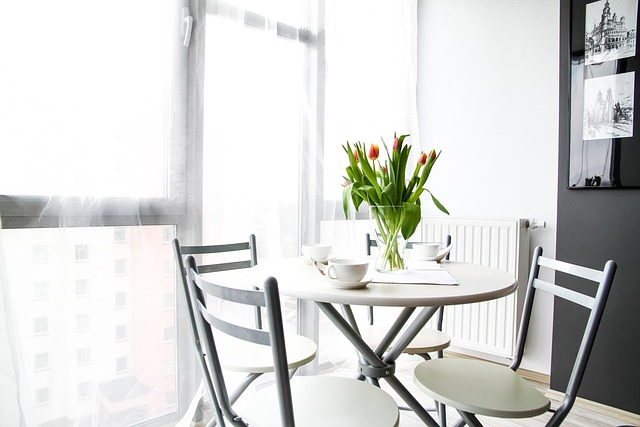GLULAM (Glue-Laminated Timber) is an eco-friendly, strong, and versatile construction material ideal for commercial buildings, enabling longer spans, open interiors, and aesthetic appeal. Its cost-effectiveness stems from precision engineering, local material sourcing, reduced on-site assembly time, prefabrication, and lower maintenance costs over time. GLULAM offers a superior ROI with enhanced building longevity and minimal environmental impact, making it a sustainable choice for cultural centers and public spaces.
“Discover the cost-effectiveness of GLULAM (Glue Laminated Timber) as a revolutionary construction material. This article explores the financial benefits of GLULAM, offering an in-depth look at its role in modern building practices. From understanding the basics to analyzing ROI, we demystify this sustainable and strong option. By examining key cost factors and longevity, architects and builders can make informed decisions about GLULAM’s potential in their projects. Dive into this comprehensive guide for a fresh perspective on construction costs.”
- Understanding GLULAM: Definition and Basics
- Cost Factors in GLULAM Construction
- Longevity and Return on Investment (ROI) Analysis
Understanding GLULAM: Definition and Basics
GLULAM, or Glue-Laminated Timber, is a modern construction material that has gained significant attention in the industry due to its exceptional strength and versatility. It is engineered by gluing together multiple layers of wood veneers, creating a robust and durable composite. This innovative technique allows for the production of large-scale structural elements with minimal waste, making it an environmentally friendly option. GLULAM’s unique manufacturing process enables the creation of complex shapes and designs that were previously challenging to achieve with traditional timber construction.
The material offers various advantages, particularly in commercial building applications. Its ability to span long distances without support makes it ideal for creating open-plan interiors, while its strength allows for the design of slender and elegant structural components. GLULAM solutions are also popular for their use in complex geometry projects, where traditional construction methods might face limitations. This versatility has led to its growing popularity in architectural designs that demand both aesthetic appeal and structural integrity.
Cost Factors in GLULAM Construction
The cost-effectiveness of GLULAM (Glulam) construction lies in its ability to streamline processes and reduce material waste. Several key factors contribute to this advantage. Firstly, the precision engineering of GLULAM components means less on-site assembly time, cutting labour costs significantly. Additionally, the use of sustainable and often locally sourced materials can lower expenses associated with transportation and imports, making it an attractive option for eco-friendly urban development.
GLULAM building systems offer numerous benefits that translate to cost savings for contractors. Pre-fabricated components reduce construction time, minimising weather delays and maximising efficiency. This not only expedites project completion but also lowers overall labour costs. Furthermore, the structural integrity of GLULAM framing ensures longer-lasting buildings, reducing future maintenance expenses compared to traditional construction methods.
Longevity and Return on Investment (ROI) Analysis
The structural integrity and durability of glulam make it an excellent choice for long-term investments, offering a compelling return on investment (ROI). This engineered wood product is known for its exceptional longevity, resisting rot, and insects while maintaining strength over decades. In commercial settings, particularly in glulam architecture design trends, this translates to reduced maintenance costs and fewer structural failures, ensuring buildings remain safe and economically viable for extended periods.
When considering the environmental benefits of glulam for sustainable infrastructure, the long-term savings become even more evident. Its versatility allows for innovative designs, reducing material waste during construction. Moreover, glulam’s use in cultural centers and other public spaces can contribute to a building’s unique aesthetic appeal while providing a robust framework that requires minimal replacement or repair, further enhancing its ROI over time.
GLULAM (Glued Laminated Timber) construction stands out as a cost-effective, sustainable choice for modern building projects. By understanding its structural advantages and thoughtful consideration of cost factors, builders can leverage GLULAM’s potential to deliver high-performance structures with impressive longevity. The compelling ROI makes GLULAM an attractive option, ensuring both economical savings and environmental responsibility.







